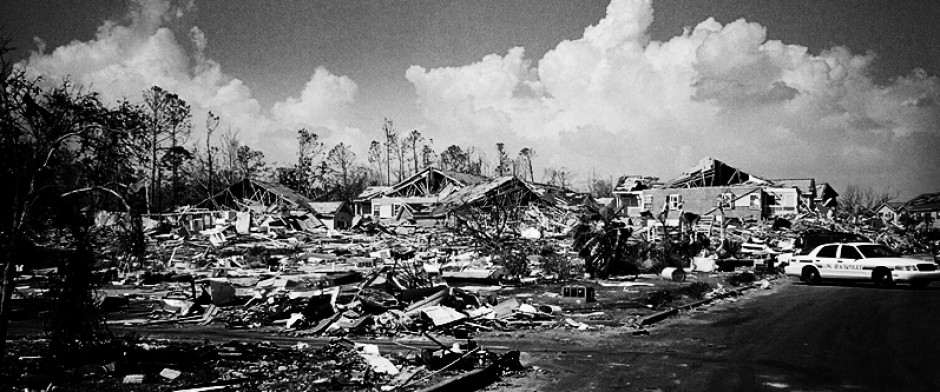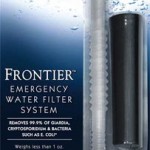
The popularity of knives is ageless. Edged implements have been a critical tool for mankind from the earliest fossil records. Knives in particular have found great popularity for their utility, portability, concealability, and lethality. However, edged chopping instruments like hatchets and tomahawks still provide valuable, yet often overlooked advantages over knives to both the survivalist and outdoorsman. The point of this article is not to suggest that one tool is superior, but rather to show the advantages inherit in edged chopping tools.
Looking at the earliest stone tools, we find both cutting and chopping tools side by side and for good reason. Anyone planning to survive in the wild needed both. Chopping tools allowed trees to be cut, wood to be split, shelter to be constructed, big game to be processed, and enemies and prey to be quie
tly killed with swift precision. In fact, a single blow from a sharp axe, hatchet, or tomahawk could easily sever limbs, decapitate, crush bone, or shatter a rib cage and slice through vital organs making it even more lethal than a knife. Further, many of these implements can be used at greater distance due to a long handle and the weighted head containing the cutting edge, which magnifies the force created in a swing. Also, with practice, these implements lend themselves well to being thrown. In fact, they are far easier to master than knives in respect to being thrown and can actually be finely tuned into an effective capability with minimal practice.
Today we also face prohibitions on weapons of all types whether carried concealed or in the open. Knives in particular endure an unfair stigma by the general population as a weapon vice tool. However, an axe or hatchet; albeit an incredibly effective weapon, tends to be seen as a tool vice a weapon. As such, law enforcement also tends to look at knives more harshly than an axe or hatchet. A person is able to carry “wood cutting” equipment in their vehicle and not draw unwanted scrutiny, which a person attempting to conceal a Bowie knife or even a small flip out folder in their pocket would generally receive.
Reliability is also a strong suite of chopping tools. They are simple and have almost nothing to fail or break. One only needs
to maintain the handle, which can be easily and repeatedly replaced with improvised materials even in austere conditions with the most basic of tools. The most common problem is the head slipping off the handle, which can be easily remedied by driving a wedge into the handle or purchasing a synthetic handle. These chopping implements also only require a utility edge, which is tough, easy to maintain, and easy to achieve unlike finely honed knife edges. This edge can be achieved with a rough stone, file, or grinder and doesn’t require the use of high end sharpening equipment. Nonetheless, many axes and tomahawks are sharpened to a fine edge on par with any knife.
Chopping tools also lend themselves well for breaching and hammering tasks. Whether trapped inside or outside of a vehicle or structure, chopping tools are far superior to other tools. We tested hatchets on windshields and sheet metal and found they easily penetrated. We also found that they made short work of a variety of doors, drywall, and plywood. Well-constructed all steel implements made by Estwing in particular were also very adaptable to prying tasks. Finally, in a pinch, most of these tools could be used for a variety of hammering tasks depending on their design. We were able to effectively drive nails, smash open nuts, and drive stakes. None of these tasks were effectively performed by knives with the exception of windshields where some folding knives containing a “windshield punch” did an adequate job of spider webbing the window, but usually failed to completely
shatter and remove the coated glass (note that hatchets also provided superior protection to the user due to increased range from the glass shards).
We also were able to test out how well our tools penetrated armor and found them again to be far superior to knives. In fact, the tactical tomahawks ripped through steel helmets with ease and when sharp were able to also penetrate soft body armor. When tested against Kevlar helmets all implements delivered a strong enough strike to most likely knock the wearer unconscious and axes in particular proved to be an overmatch. Knives proved completely ineffective against both steel and Kevlar helmets, but did penetrate soft body armor. We also tested strike force against body armor containing both steel and ceramic plates and would not rate them as effective in penetrating the hard armor, but found the strike force of both axes and heavy hatchets enough to knock down and injure anyone wearing the armor. It is also worth noting that all implements tested have the ability to bypass any armor worn and still easily deliver a lethal strike with a single blow.
Finally, good hatchets, axes, and tomahawks are also very affordable. The demand for them does not command the prices that “tactical” folders and other “sexy” knives rate for price mark-ups. A used axe or hatchet can be found for as little as a few dollars and brand new items rarely cost more than fifty dollars.
After testing various implements our staff has come to some basic conclusions when it comes to selection and purchasing of chopping tools. First of all, it is best to buy items that don’t draw attention like neon green “zombie apocalypse” warhawks. You can get the same items in neutral colors. Second, synthetic handles proved superior to wooden handles for both chopping an
d throwing tasks. Third, most steel in modern middle and low end axes and hatchets were of poor quality. We recommend buying from a reputable dealer and brand or finding “antique” hatchets and axes, which have far better steel. Finally, for throwing, double bla
ded implements are superior as they can stick on both the front and back spin.
When it comes to recommendations, we generally don’t support one brand over another, but will provide you the facts from our field tests. We found that for fighting and throwing, SOG’s Tactical Tomahawk Black / F01TN-CP ( http://www.sogknives.com/tactical-tomahawk-black.html ) is a well-designed lethal implement that when sheathed draws little more attention than a standard hatchet or axe. It is well balanced and a novice can stick this tomahawk at a broad range of rotation angles at about seven paces nearly every throw with a little practice. We threw our Tactical Tomahawks for weeks on end and thousands of times into trees, stu
mps, logs, plywood, steel drums, and slabs of pigs and found the tool held up and could be brought back to a very sharp edge with little effort or skill. However, the tomahawk is not well adapted for more mundane tasks such as chopping and splitting wood. If you are searching for an actual axe or hatchet for chopping and splitting we were impressed with the edge, quality of steel, durability, and performance of both Fiskars and Estwing. Fiskars provides tools with synthetic handles, which are lighter and still extremely rugged. This allowed for faster manipulation and ease of use. They also didn’t seem to transmit shock to the user. Estwing provides all steel tools that are virtually indestructible, but at a tradeoff of being very heavy and slow to manipulate. Estwings will also wear you out if you use them all day due to the weight and shock translation through the handle. Depending on your needs and uses, all of the above brands we found to perform at or above standard.











